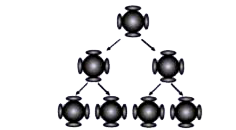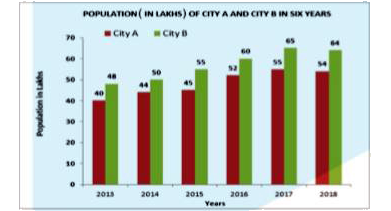If a trait A exists in 10% of a population of an asexually reproducing species and a trait B exists in 60% of the same population, which trait is likely to have arisen earlier?
In asexual reproduction, the reproducing cells produce a copy of their DNA through some chemical reactions. However, this copying of DNA is not accurate and therefore, the newly formed DNA has some variations.

It can be easily observed in the above figure that in asexual reproduction, very few variations are allowed. Therefore, if a trait is present in only 10% of the population, it is more likely that the trait has arisen recently. Therefore, it can be concluded that trait B that exists in 60% of the same population has arisen earlier than trait A.
Topper's Solved these Questions
- BOOK - OSWAL PUBLICATIONCHAPTER - HEREDITYEXERCISE - NCERT CORNER (EXERCISE QUESTIONS)12videos
HEREDITY
- BOOK - OSWAL PUBLICATIONCHAPTER - HEREDITYEXERCISE - NCERT EXEMPLAR (MULTIPLE CHOICE QUESTIONS )25videos
HEREDITY
- BOOK - OSWAL PUBLICATIONCHAPTER - HEREDITYEXERCISE - SELF ASSESSMENT (I. OBJECTIVE TYPE QUESTIONS) (D.Short Answer Type Questions )1videos
HEREDITY
- BOOK - OSWAL PUBLICATIONCHAPTER - DIKSHA QUESTIONS EXERCISE - ENVIRONMENT (MULTIPLE CHOICE QUESTIONS)6videos
DIKSHA QUESTIONS
- BOOK - OSWAL PUBLICATIONCHAPTER - HEREDITY AND EVOLUTION EXERCISE - CREATING BASED QUESTIONS11videos
HEREDITY AND EVOLUTION
Similar Questions
In 2019 if there is 10% increase in population of city A and 15% decrease in the population in B as compared to that in 2018 ,then the population of city A is what percentage more /less than in B , in that year ? (correct to one decimal places)
 View Solution
View SolutionThe following graph shows the range of variation among population members for a trait determined by multiple genes.

If this population is subject to stabilizing selection for several generations, which of the distribution is most likely to result ?View Solution
Knowledge Check
- Question 1 - Select One
Which of the following is not a direct conclusion that can be drawn from Mendel's Experiment ?
a) Only one parental trait is expressed
b) Two copies of each trait is inherited in sexually reproducing organism
c) For recessive trait to be expressed, both copies should be identical
d) Natural selection can alter frequency of an inherited trait.AOnly one parental trait is expressedBTwo copies of each trait is inherited in sexually reproducing organismCFor recessive trait to be expressed, both copies should be identicalDNatural selection can alter frequency of an inherited trait. - Question 2 - Select One
In a city, 40% of the people are illiterate and 60% are poor. Among the rich 10% are illiterate. The % of the illiterate poor population is ?
A46%B44%C38%D36% - Question 3 - Select One
10% of Brazil's population migrated to South Affrica 10% of the remaining migrated to America and 10% of rest migrated to Australia. If the female population which was left in Brazil remained only 3,64,500 , Find the population of Brazil city before the migration the female population was half the male population and this ratio did not change after the migration ?
A1800000B1500000C1600000D1400000
Assertion Polymorphism is the existence of two or more forms of the same species within the same population
Balanced polymorphism occurs when different forms coexist in the same population in a stable environmentView SolutionThe presence of recessive trait in a large population is be 16% the frequency of dominant trait in that population is :-
View SolutionThe given graph shows the range of variation among population members for a trait determined by multiple genes. If this population is subjected to disruptive selection for several generations, which of the following distributions is most likely to result?
 View Solution
View SolutionThe given graph shows the range of variation among population members for a trait determined by multiple genes. If this population is subjected to disruptive selection for several generations, which of the following distributions is most likely to result?
 View Solution
View SolutionWhich of the following statements describe natural extinction?
A. Extinetions abetted by human-activities.
B. Slow replacement of existing species
C. Also known as background extinction
D. A small population is most likely to be extinct.View Solution
